How To Improve Your Landscape Photos Using These Tips
Taking great landscape pictures can seem so easy compared to shooting action photography or taking pictures of children or animals. But any photographer that's carried heavy equipment up a mountain to take a spectacular shot with no success, will tell you it's a lot more than just showing up. Here are a few things you can to do to get beautiful landscape pictures.
Focus On the Detail
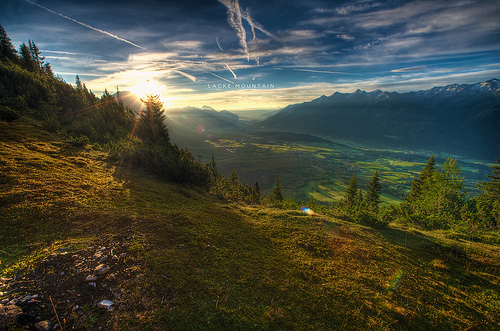
Lacke Mountain by John O'Nolan on flickr (licensed CC-BY)
Landscape photography is all about the details. The more detail you can capture in your image, the better it's often going to look. Detail and depth of field are both increased by longer exposure times, so try to use the highest F-stop value (22 on most cameras) whenever possible. This will allow less light into the camera and give you more flexibility in exposing the photo. If you want to use a slower ISO speed (around 100) this will also pull in more detail but be careful as low ISOs may not be the best for all lighting situations.
Hold 'em Steady
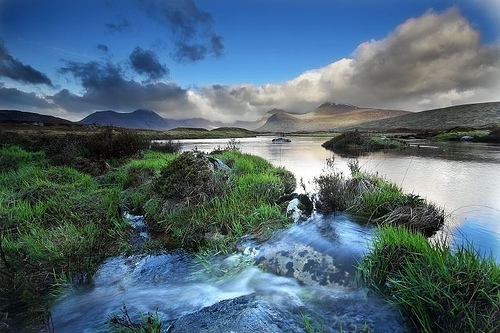
rannoch moor by mike138 on flickr (licensed CC-BY-ND)
Even though a slower shutter speed will give you greater depth of field and detail, increasing the exposure time has its own problems. At a shutter speed of about 125, even the most steady handed photographer will struggle with "hand shake" blur so it's best to mount your camera on a tripod or brace it on a sturdy object. If you're using the bulb setting on your camera or a super slow shutter speed you may also want to consider getting a cable release. A cable release will help prevent the image from being ruined because of your hand movements pushing the shutter button.
Aim for Something
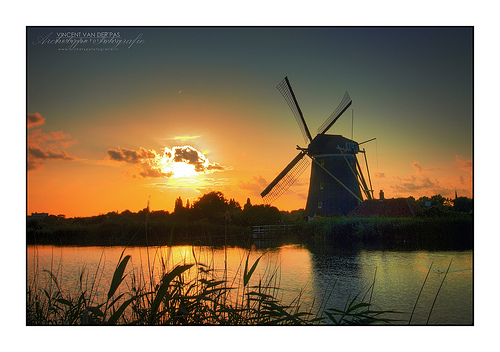
HDR Sunset @ Windmill 'Prinsenmolen', Rotterdam by Vincent van der Pas on flickr (licensed CC-BY-SA)
Picture an empty room with no windows - pretty boring isn't it? Just like any other picture, you need a subject in your landscape picture to make it interesting. No matter what kind of landscape you're taking, you want to have some type of focal point framed in the image. This may seem strange, but simply pointing a camera at a mountain and hitting the shutter isn't going to automatically result in an amazing photograph. Think of the "story" of each photograph, and try to tell it in the frame.
Always Be Ready
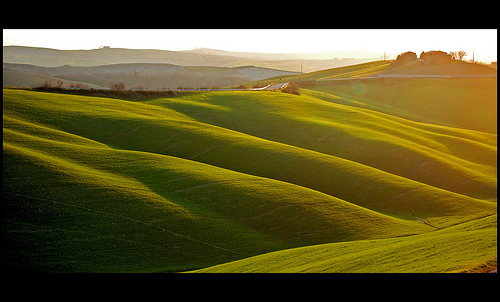
...onda su onda... by Luigi Torreggiani on flickr (licensed CC-BY)
Landscape photographers don't have the luxury of scheduling appointments or building their own light environments. You have to be able to work with factors outside of your control and take advantage of them on a moments notice. Shooting images in the early morning hours compared to dusk is very different and has a very limited timeframe for you to take the perfect shot. So, if you want to take an impressive landscape picture, you're going to need to have your camera gear packed up and ready for whenever an interesting moment appears.
Be Patient
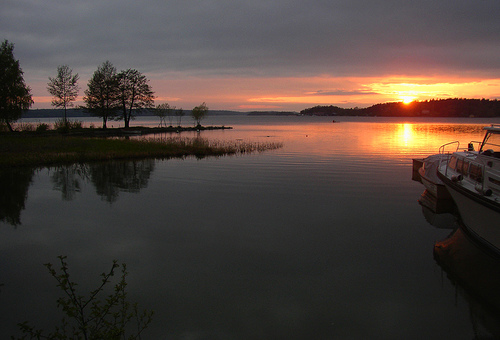
Sunset 13 may by Per Ola Wiberg ~ Powi on flickr (licensed CC-BY)
Though it seems almost the opposite of being ready to run out the door at a moment's notice, understand that landscape photography can require an immense amount of patience. Every fascinating picture captured by a landscape photographer's lens will often never be seen the same way again, so you often have to be willing to wait it out.
Landscape photography is deceptively complex. From an outsider's perspective, it seems like all a photographer needs is a camera and some hills or a waterfall; understanding how the time, weather, and composition of these photos influences the final product is the mark of a true professional. With those couple of things, you can start taking great landscape pictures that you'll be proud to display on your wall.




